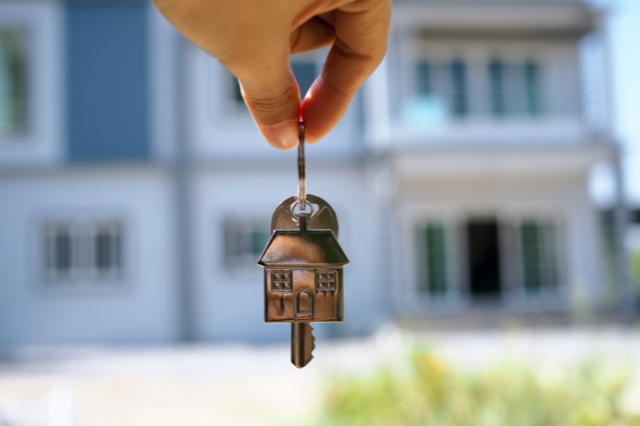Thinking of buying your first home in Queensland? A $30,000 grant could be the boost you need to finally make it happen. With property prices rising and saving for a deposit still one of the biggest hurdles, the Queensland Government has stepped in with a significant incentive aimed at first-time buyers looking to purchase or build a new home.
Ausfirst Lending Group will walk you through everything you need to know about the Queensland $30,000 First Home Buyer Grant. This includes eligibility and property types, application steps, potential pitfalls, and how it fits into your broader mortgage strategy. Whether you’re just starting your homeownership journey or already exploring house and land packages, you’ll find clear, helpful guidance right here.
Let’s start with the basics.
Understanding the Grant
What is the $30K grant, and why was it introduced?
The Queensland $30,000 First Home Buyer Grant is an updated version of the long-standing First Home Owner Grant (FHOG). Introduced in late 2023 and extended through mid-2025, this larger grant aims to address affordability issues and boost housing construction by offering eligible first-time buyers a one-off payment of $30,000.
The goal? To help you get into the property market sooner by easing upfront costs, especially if you’re building or buying a brand-new home. The grant can be a valuable addition to your deposit, giving you greater borrowing power and possibly improving your loan options.
How it differs from previous versions of the First Home Owner Grant (FHOG)
In the past, the FHOG in Queensland offered $15,000. This new version doubles the grant amount for eligible applicants buying or building a brand-new home, but the core eligibility criteria remain similar. The increased funding reflects the current challenges many buyers face, including higher construction costs and limited housing supply.

Who Is Eligible for the $30K Grant?
Understanding your eligibility for the QLD First Home Grant is the first step toward accessing this support.
Age, citizenship, and residency requirements
To be eligible:
- You must be at least 18 years old.
- You must be an Australian citizen or permanent resident, or applying jointly with someone who meets that requirement.
- You must be a natural person (not a company or trust).
When buying with a partner, only one applicant needs to meet the citizenship or residency criteria, but both must satisfy the other conditions.
If you’re a teacher or education professional, it may also be worth checking for first home buyer grants for teachers, as some occupations might be eligible for additional support.
First home buyer rules
This grant is strictly for first-time buyers. You and any co-applicants:
- Must not have previously owned or jointly owned a residential property in Australia that you lived in
- Must not have claimed a First Home Owner Grant before, regardless of the state or territory.
Property type and value limits
To qualify, the property must:
- Be a brand-new home (including off-the-plan, newly constructed, or substantially renovated properties not previously lived in)
- Have a total value of $750,000 or less, including land if you’re building
These rules apply to all eligible property types across Queensland.

What Properties Qualify Under the Grant?
Not all properties are eligible. The grant is designed to support new housing supply, so it specifically targets newly built or unoccupied homes.
New builds vs. off-the-plan purchases
You may be eligible if you’re:
- Building a brand-new home (on vacant land or through a builder)
- Purchasing a newly completed property that hasn’t been previously occupied
- Buying off-the-plan from a developer before construction is complete
Regional vs. metropolitan locations
The grant is available state-wide, meaning it applies whether you’re buying in Brisbane, Cairns, Toowoomba, or a regional town. However, the $750,000 cap may stretch further in regional areas, giving you more property for your budget.
House and land packages, apartments, townhouses
Eligible property types include:
- Freestanding houses
- Townhouses and villas
- Duplexes
- Apartments and units (if newly built and never lived in)
- House and land packages where construction hasn’t yet begun
Substantially renovated homes may also qualify but must meet strict criteria and valuation guidelines.
How to Apply for the Queensland $30K Grant
Once you’ve found a suitable property and confirmed your eligibility, applying is relatively straightforward.
Step-by-step application process
- Check your eligibility using the Queensland Government’s criteria. This helps you avoid delays or rejections later on by ensuring you meet all requirements upfront.
- Secure finance pre-approval from your lender or mortgage broker. Pre-approval also clarifies how much you can afford to borrow, so you can shop with confidence.
- Submit your application either through an approved bank/lender or directly to the Queensland Office of State Revenue. Going through a lender may simplify the process, as they often submit the application on your behalf.
- Provide supporting documents like ID, purchase contracts, and builder agreements. Having these documents ready early can significantly speed up your approval time.
- Await assessment and approval from the Office of State Revenue. Processing times can vary, so it’s best to check current turnaround estimates on the official website.
- Receive your payment, usually at settlement or during construction stages, depending on your lender and application method. Make sure your builder or solicitor is aware of the grant timing to plan for drawdowns or payments.
Documents needed
- Signed contract of sale or building contract
- Identification documents
- Proof of residency or citizenship
- Loan approval (if applying through a lender)
Timeframes and deadlines
You must apply within 12 months of the contract date. If you’re building, the home must be completed within 12 months of the start date to receive the full grant. Delays could impact your eligibility, so it’s crucial to plan carefully.
How the Grant Works with Your Home Loan
Many first home buyers ask, “Can I use the $30K grant as part of my deposit?” The short answer is yes, but it depends on your lender. While it’s officially a first home buyer grant, it also applies to builds — which is why first-home builders may still refer to it when securing funds for a new home or house and land package.
Using the grant as a deposit top-up
Some lenders may accept the grant as part of your deposit, especially if you’re also contributing genuine savings. It could help you reach the minimum deposit required and may allow you to borrow sooner.
How lenders view the grant
Lenders often require that part of your deposit is from genuine savings, which typically means money you’ve saved over time. While the grant helps reduce your out-of-pocket costs, it may not count as genuine savings with all lenders. That’s where a broker can help match you with a lender that offers flexibility.
Working with a mortgage broker to secure approval
A broker can assess your full financial picture and recommend lenders that accept the grant as part of the deposit. They’ll also help you align your application timing with the grant process and navigate other first-home buyer schemes.
Key Benefits of the $30K Grant
This isn’t just a bonus. For many buyers, the grant can be a game-changer.
- Jumpstart your deposit: Reduce the savings barrier with a substantial cash boost.
- Lower upfront costs: Apply the grant to legal fees, stamp duty, or lender’s mortgage insurance (LMI).
- Expand your property options: A larger budget could mean a better location or more space.
- Boost your borrowing power: Lenders may offer better terms with a stronger deposit.
- Improve approval chances: Having the grant can strengthen your home loan application.
- Support for new builds: Encourages entry into the market without relying on older stock.
- Add confidence to your offer: Knowing you have $30,000 secured can make negotiations easier.
Potential Pitfalls and Limitations
As helpful as the grant is, it’s not without potential complications.
Construction delays
If your build takes longer than 12 months, you may lose eligibility. Unexpected delays like weather or builder shortages can push timelines, so always build in buffer time.
Property value caps
The $750K limit may restrict your options in higher-cost areas. This could make it harder to buy in inner-city suburbs, so explore nearby growth corridors as alternatives.
Changing eligibility
If you or your partner buys another property before settlement, you may be disqualified. Even signing another contract before your grant is finalised can void your application.
Inflexible lenders
Not all lenders treat the grant the same way. Some may not count it toward your deposit. A local mortgage broker in the Sunshine Coast can help you identify which lenders are grant-friendly and flexible with eligibility conditions.
Time-sensitive application
Missing key deadlines could void your claim. Set calendar reminders for each grant milestone to stay on track.
GST confusion
If you’re buying from a developer, confirm whether the grant is included in the price. This affects your borrowing power and out-of-pocket costs, so always ask your conveyancer to review.
Misaligned contracts
Your contract and build timelines must align with grant rules. If timelines shift, you may need to renegotiate clauses or seek an extension with the grant office.
Combining the Grant with Other Schemes
You may be able to layer the $30K grant with other government initiatives.
- First Home Guarantee (FHG): Buy with as little as a 5% deposit without paying LMI. This may significantly reduce your lender’s mortgage insurance and help you buy sooner.
- Stamp duty concessions: Queensland offers stamp duty discounts for homes valued under certain thresholds. These concessions can mean the difference between affording a property now or waiting years to save.
- Regional home building boost: Additional incentives may apply in select rural areas or regional towns. This could help reduce your overall build costs or offer additional support for infrastructure.
- Super Saver Scheme: Use voluntary super contributions for your deposit. It’s a way to boost your deposit faster, thanks to tax savings on super contributions.
- State-based developer incentives: Some developers offer extra bonuses or rebates for first home buyers. These can include free upgrades, discounts, or help with closing costs. It’s definitely worth asking about!
- Energy efficiency rebates: Homes with sustainable features may qualify for additional support. This can lead to lower long-term utility bills and greater resale value down the track.
A mortgage broker in QLD can assess your eligibility and help you combine different government schemes to maximise your benefit.
Final Tips Before You Apply
Before you dive in, here are practical first home buyer tips QLD residents should consider for a confident start.
Talk to a mortgage broker early
They’ll help you assess grant eligibility and find suitable lenders. They’ll also manage the application process, saving you time and reducing the chance of errors.
Compare home loan options
Don’t assume all loans treat the grant equally. Shop around. A lower interest rate or flexible structure could save you thousands over the life of the loan.
Get pre-approved before signing
This protects you if something changes during the process. Without pre-approval, you risk losing your deposit or missing deadlines if finance falls through.
Review your timeline
Ensure you can meet the 12-month completion requirement. If your builder has a long lead time, make sure that doesn’t clash with your grant deadlines.
Understand your cash flow
The grant helps, but you’ll still need savings for upfront costs. Budgeting early prevents nasty surprises like unexpected lender’s fees or moving costs.
Document everything
Keep a record of all contracts, approvals, and communications. This is especially important if you need to appeal or clarify something with the grant office.
Don’t rush
A well-planned purchase is better than a fast one that ends in disappointment. Take the time to understand all your obligations before signing a legally binding contract.
Ready to Take the First Step?
The Queensland $30K First Home Buyer Grant could be the key to unlocking your first home. But navigating eligibility rules, timelines, and loan requirements can get tricky fast.
Before you commit to a property or contract, speak to a qualified mortgage broker who can walk you through your options. With the right advice, you’ll move from dreaming about homeownership to turning the key in your front door.
Want expert help with your first home purchase? Reach out today for a personalised strategy session and discover how to make the most of the $30K grant.
Frequently Asked Questions (FAQs)
No. The grant is a one-time benefit for first-time buyers only. If you’ve received it before or owned property previously, you won’t qualify again.
Yes, you can apply jointly. Both applicants must meet the eligibility criteria, but only one needs to be an Australian citizen or permanent resident.
Delays beyond 12 months from the start date could affect your eligibility. You may need to apply for an extension or risk forfeiting the grant. Always communicate with your builder and broker to stay on track.
No. The grant is only available for brand-new homes, off-the-plan purchases, substantially renovated properties that haven’t been lived in, or newly built homes. If the property has previously been occupied, even for a short time, it won’t qualify.
Timing depends on your situation. If you’re buying a completed new home, the grant is usually paid at settlement. If you’re building, it’s typically paid after the first progress payment to your builder. Your lender or solicitor can help coordinate the timing.
No. The First Home Buyer Grant is not considered taxable income and does not need to be declared in your annual tax return. However, it’s always a good idea to check with your accountant if you have any personal tax considerations.
If your situation changes, such as withdrawing from the contract, splitting with a co-applicant, or buying a different property, you must notify the Office of State Revenue. Depending on the change, you may need to cancel your application, amend your details, or reapply.



